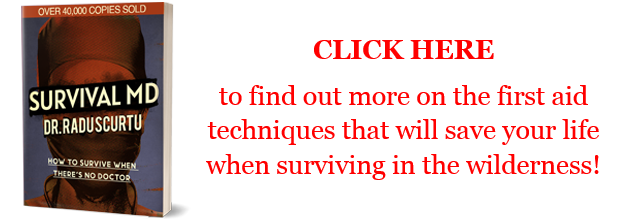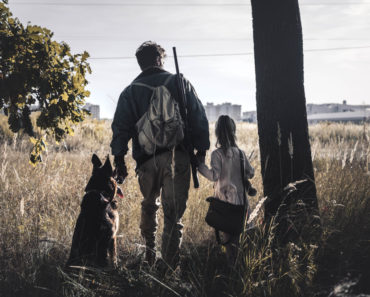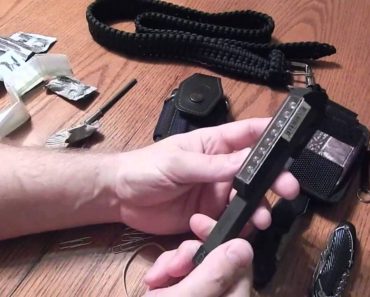Anyone who lives in an area where snowstorms are common knows just how dangerous they can be. Even worse, just how dangerous it can be to drive in them. The combination of slick roads and reduced visibility can make it fairly easy to find yourself sliding off the road into a ditch. This danger is even greater for those who are not accustomed to driving in those conditions, as they don’t have the instinctive reactions for what to do when their car starts sliding.
I’ve seen plenty of cases where cars and trucks went off the road. I remember driving in conditions where visibility made finding the road was more a matter of guesswork than anything else. I’ve seen semis on mountain roads that started lost traction and started rolling backwards, right off the edge of the highway. Fortunately, the drivers were able to leap out, before their trucks went over the edge.
So, just how do you handle such a situation? What do you do, if you’re the one who’s car went off the road and you’re now stuck in a snowbank? I don’t mean just a little bit stuck; but really stuck. Making that worse, let’s say it’s nighttime and there’s not a lot of traffic. You’re not likely to see a tow truck showing up to get you out in the next 15 minutes type of stuck.
Obviously, the first thing you’re going to try and do is get your car or truck unstuck. That’s a natural reaction and sometimes it even works. The real trick is recognizing when your attempts aren’t working and you need to quit trying.
Should that happen and you’re out in the country, the thing to do is assume you’re going to be there a while, perhaps even overnight. With that in mind, your being stuck has just turned into a survival situation and needs to be treated as such. A cold night in the midst of a blizzard is a great opportunity for hypothermia to set in. That’s not something to trifle with.
Before Leaving Home
Surviving such a scenario, like surviving most scenarios, depends a lot on your preparation. You can’t expect to go driving around in the wintertime, in nothing but a light jacket, and be comfortable, let alone survive. Considering the risks associated with cold weather and storms, having the right survival gear with you is essential. There’s really not much you need; but what’s on this list is critical.
- Rescue blankets – have at least 3, but more is better
- Blanket – at least one per person
- Duct tape
- Plastic bags
- Roll of toilet paper
- Candles or something else that will generate heat, without depending on the car
- Flashlight, with extra batteries
- Rope (paracord will do)
- High energy snack foods
- Water (in the passenger compartment, not the trunk)
- Automotive phone charger
In addition to putting these things in the car, you should always dress warmly, with a good coat, hat, scarf, and gloves. Too many people, especially women, wear coats that are more about style than warmth. Those are fine when you know you’ll be indoors; but I wouldn’t recommend traveling in them. If there’s a reason to have that stylish jacket, then bring along a warm winter coat as well.
The other thing to do before leaving home is to let someone know where you are going and when you expect to arrive. Upon arriving at your destination, call or text that same person and let them know you’ve arrived safely. If you don’t call, they need to call the police or state patrol and let them know that you haven’t shown up when and where you were expected to. They are used to receiving calls like that during blizzards and will appreciate it. They should be prepared with the following information:
- Your name and a description
- Your vehicle type and color
- The time you left
- Your intended route
From the viewpoint of the police, this information is invaluable. It’s always better to find someone before they freeze to death, than to be too late. Knowing that someone is out there and about where they might be will help them look for that person’s vehicle.
While You’re Driving
Obviously, you’re going to want to drive carefully when traveling in any winter weather. Roads can ice up, in a condition known as “black ice” without you even seeing ice on them. You can travel from a place where everything is safe, to one where the roads are slick and impassible in a matter of minutes. You might not even be the one who has a problem; but rather another driver does, losing control of their car and running into yours.
Always be sure to keep your gas tank at least half full when driving in the winter. Not only does the extra weight provided by that gas help you maintain better control of your vehicle (especially if it is rear-wheel-drive), but it provides you with fuel to burn for warmth, should you get stuck. It doesn’t cost any more to keep the top half of your tank full, than it costs to keep the bottom half full.
You should also keep track of where you are, noting mile markers, exit number and landmarks that you can pass on to the authorities, if you get stuck and have to call for help. The more accurately you can pinpoint your location for them, the faster they will find you.
When You Realize You’re Stuck
Once you realize you’re stuck and that you’re going to be there a while, awaiting rescue, the first thing you should do is try calling for help. Calling 9-1-1 is more effective than calling your friend, as they’re connected to the necessary agents to get help heading your way. If you don’t have enough signal for a call, try texting, as text messages don’t require as much bandwidth as a phone call does. Sometimes, you can get a text message through, when you can’t get a call through. Sixteen of the states now have the text-to-9-1-1 option in place.
In most cases, the longest you’ll have to spend in your car is overnight, as all our highways and county roads are patrolled daily. Law enforcement officers know how that cars tend to go off the road in snowstorms and are always alert, looking for them. They may not see you at night; but they definitely will once the sun rises.
What Not to Do
Before going any further, let’s talk about a few things you don’t want to do, as they will just make the situation more dangerous for you.
- Don’t bother trying to dig your car out, as you probably can’t.
- Don’t get out of your car, unless absolutely necessary. Not only does your car provide you with shelter, but it is also much easier for rescuers to see, than trying to spot a person trudging though the snow.
- Don’t run your engine full-time, as you will run out of gasoline quickly. Rather, run it off and on fifteen minutes at a time. Turn the heater on full-blast while it is on, to get the most possible heat out of it. While different sized engines burn different amounts of fuel, the average is about one-half gallon per hour while idling.
- Don’t use your car’s electrical system for anything that isn’t absolutely necessary. Cold is hard on batteries as it is and running your engine intermittently probably isn’t going to be enough to fully recharge your battery.
What to Do
Your biggest concern while waiting for rescue, is keeping warm. That’s why you don’t want to leave your car. But cars aren’t well insulated, making it hard to keep warm in a car. Still, you’re better off inside the car than outside.
So, the thing to do is to improve your ability to stay warm inside the car. That’s what the survival gear I mentioned above is all about. Start by using the duct tape to tape rescue blankets over the “walls” and ceiling of the passenger compartment. If you are alone or there are just two of you in the vehicle, you can make a curtain of one of those blankets, just behind the front seats, which will make the area you need to keep warm smaller. Cut the blankets if needed, so that you can cover the maximum surface area.
Rescue blankets don’t provide insulation; they’re just heat reflectors. That’s important, but that’s also why I recommended having regular blankets to wrap yourself in. The rescue blankets will help keep the heat from escaping from your car, but you also need insulation to keep you warm.
If you have candles, lighting them will provide you with some minimal heat, as well as light. You’d be surprised just how much heat you can get out of a couple of candles. Your car won’t be warm; but they’ll go a long way to cut the chill. As I mentioned above, you can use your car heater; as long as you run it and the engine intermittently.
To avoid going outside, use the plastic bags as a porta-potty. That’s a bit tricky, but it will help keep you warm. Tie the bags shut, once they’ve been used and either set them on the floor in the back of the car or open the door just far enough to set them outside.
You can use your headlights to signal any oncoming traffic, flashing them off and on a couple of times. This is enough to attract attention to the fact that what might look like a snowbank is actually a car and that there is someone in that car. While not everyone will respond, some people will and emergency personnel definitely will. Your flashlight can be used in the same way, when people are closer.
Finally, if you have to go out of the vehicle for any reason, tie one end of the rope to the steering wheel and the other end either to your wrist or your beltloop. A gust of wind can knock you off your feet or turn you around, so that you don’t know which way the car is anymore. With that rope tied to you and the car, you always have a lifeline to lead you back to the shelter of your car.



























